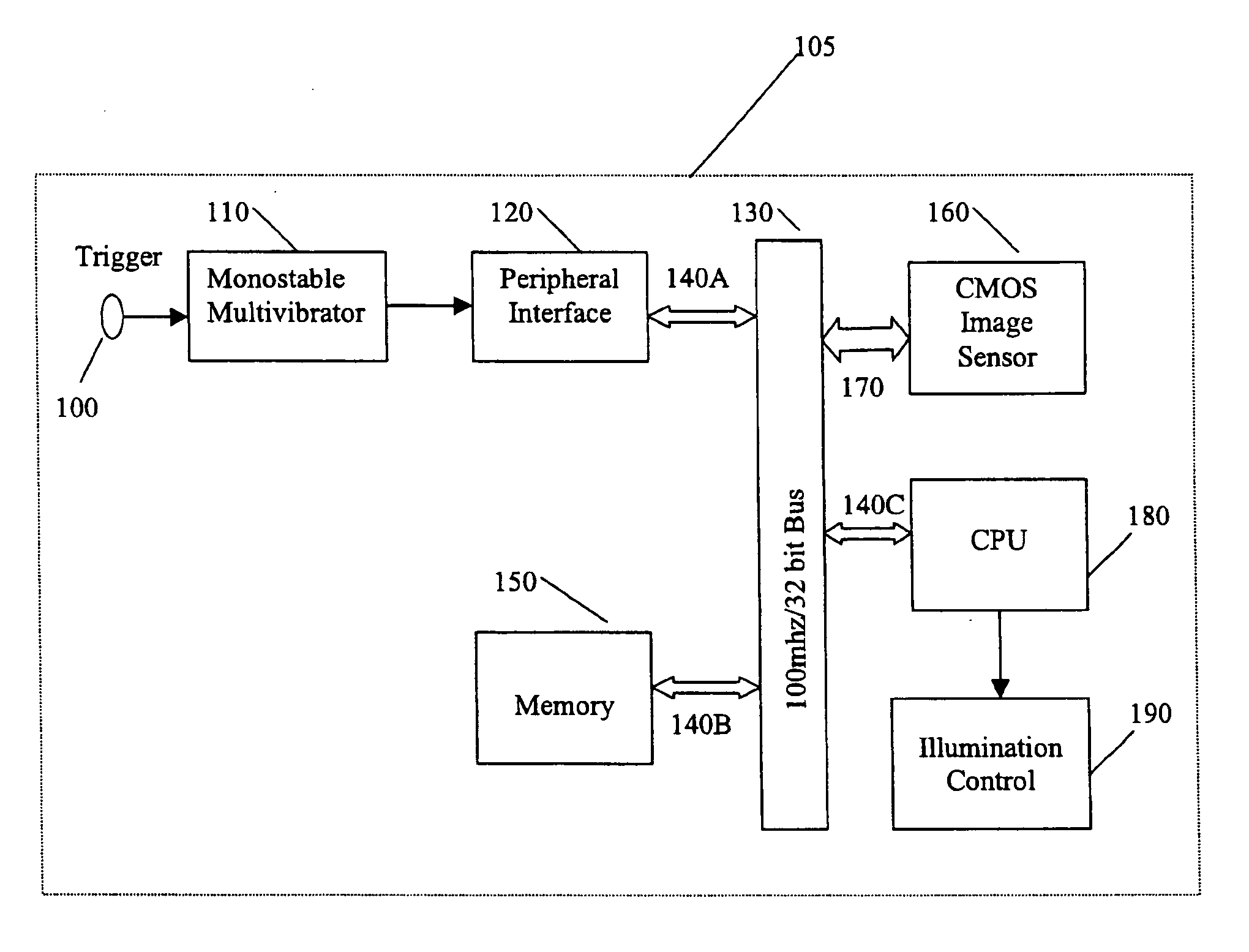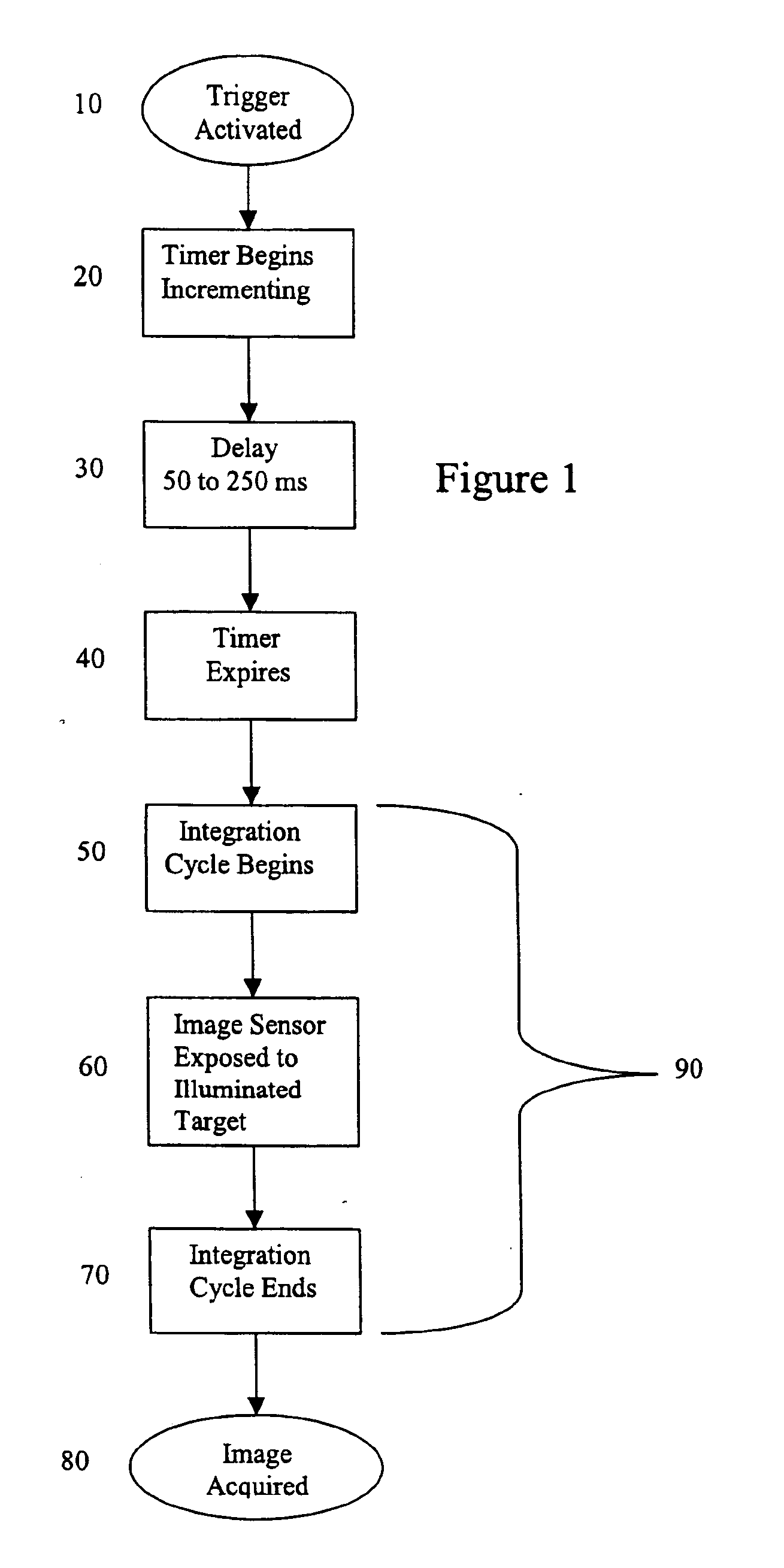Motion induced blur minimization in a portable image reader
a technology of image reader and motion induced blur, which is applied in the field of reducing can solve the problems of blurring of detected light intensity, motion of human operators is inherently unstable, and reflected beams may suffer temporal displacement in relation to output laser beams, so as to reduce the effect of image blur
- Summary
- Abstract
- Description
- Claims
- Application Information
AI Technical Summary
Benefits of technology
Problems solved by technology
Method used
Image
Examples
Embodiment Construction
[0025] The present invention provides a method and apparatus for substantially reducing motion-induced blur in portable optical readers. For purposes of explanation, specific embodiments are set forth to provide a thorough understanding of the present invention. However, it will be understood by one skilled in the art, from reading this disclosure, that the invention may be practiced without these specific details. Furthermore, although the present invention is described through the use of CMOS image sensors, most, if not all, aspects of the invention apply to optical sensors in general including CMOS, CCD and laser scanners. Moreover, well-known elements, devices, process steps and the like are not set forth in detail in order to avoid obscuring the scope of the invention described.
[0026] In portable devices such as symbology readers and image capture devices, a trigger or switch of some kind is used to activate the electronic shutter and begin the integration (exposure) during im...
PUM
 Login to View More
Login to View More Abstract
Description
Claims
Application Information
 Login to View More
Login to View More - R&D
- Intellectual Property
- Life Sciences
- Materials
- Tech Scout
- Unparalleled Data Quality
- Higher Quality Content
- 60% Fewer Hallucinations
Browse by: Latest US Patents, China's latest patents, Technical Efficacy Thesaurus, Application Domain, Technology Topic, Popular Technical Reports.
© 2025 PatSnap. All rights reserved.Legal|Privacy policy|Modern Slavery Act Transparency Statement|Sitemap|About US| Contact US: help@patsnap.com



